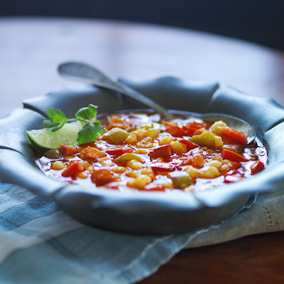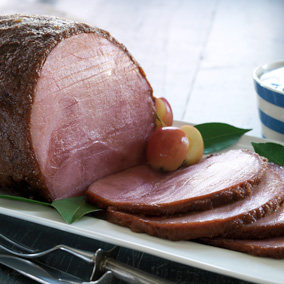The ingredient: ham
Hallmark staff

What a ham! Whether starring as the main course at your next family gathering or mixed into a quick weeknight dinner, ham is a tasty and versatile ingredient. So go ahead and let it hog the spotlight at your next meal with one of these delicious ham recipes. From ham soup to ham salad, here are three new ways to serve an old favorite.



Did you know?
- Curing started as a way of preserving pork. These days, curing is just for flavor, so less salt is needed in the brining process (making reduced-sodium hams possible). The typical grocery-store ham has been wet cured, which means treated with brine and then sometimes smoked to add flavor. (Avoid "water-added" hams, because they are of lesser quality.)
- A ham is a cut from the hind leg of a pig, and you can buy it whole or in halves. When you're buying a half ham, you can choose the shank end—easier to carve—or the sirloin (butt) end, which is meatier.
- A fully cooked ham is the most popular choice for baking. It can be bone-in—some say the bone imparts flavor—or boneless, for simpler carving and cleanup. The ham just needs to be heated to an internal temperature of about 140°F. To avoid drying it out, shorten the time in the oven by letting the ham come to room temperature for about 1½ hours before it goes in, and add a tent of foil when baking.
- Ham labeled "extra lean" is a great source of low-cal protein, but even regular ham isn't that bad for you: Since the meat comes from the well-muscled leg of the pig, it's surprisingly low in fat, and a serving of regular ham has only 151 calories. Just trim off any fatty edges before eating. Plus, like all pork, ham is a good source of B vitamins, including vitamin B6, riboflavin, niacin and thiamin (which plays a key role in the metabolism of nutrients).
Hungry for more? Check out all our recipes


